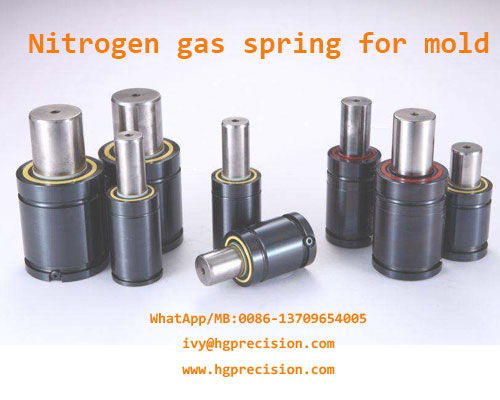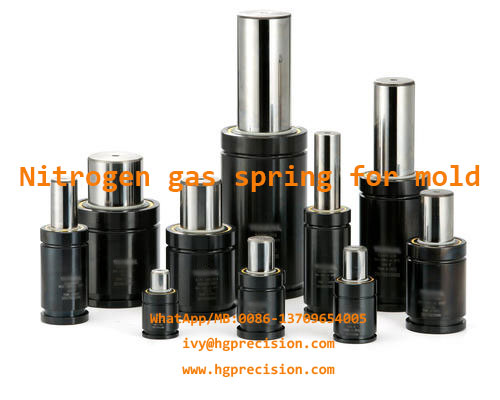Nitrogen gas spring for mold/die (referred to as die gas spring or nitrogen gas spring or nitrogen cylinder or nitrogen cylinder) is a new type of elastic component that uses high pressure nitrogen as the working medium.

Nitrogen Spring Features:
Its small size, large elasticity, long stroke, stable work, precise manufacturing, long service life (one million times), flat elasticity curve, and no need for pre-tensioning, etc.
Nitrogen Gas Spring Function:
It has tasks that are difficult to complete with conventional elastic components such as metal springs, rubber and air cushions, simplifies mold design and manufacturing, facilitates mold installation and adjustment, extends mold life, and ensures stable product quality. It can also be designed as a nitrogen spring The system, as a part of the mold to participate in the work, can easily achieve constant pressure and delayed action in the system. It is a new generation of the most ideal elastic component with flexibility.

HG Precision Advantage:
1.Manufacturing produce
2.Factory price
3.High precision, high quality, tight tolerance
4.Sustainable improve
5.Customer satisfaction
6.On-time delivery
7.OEM/ODM is available
8.Excellent after-sales service
Our website is : www.hgprecision.com, ivy@hgprecision.com, WhatApp/MB:0086-13709654005
评论
发表评论